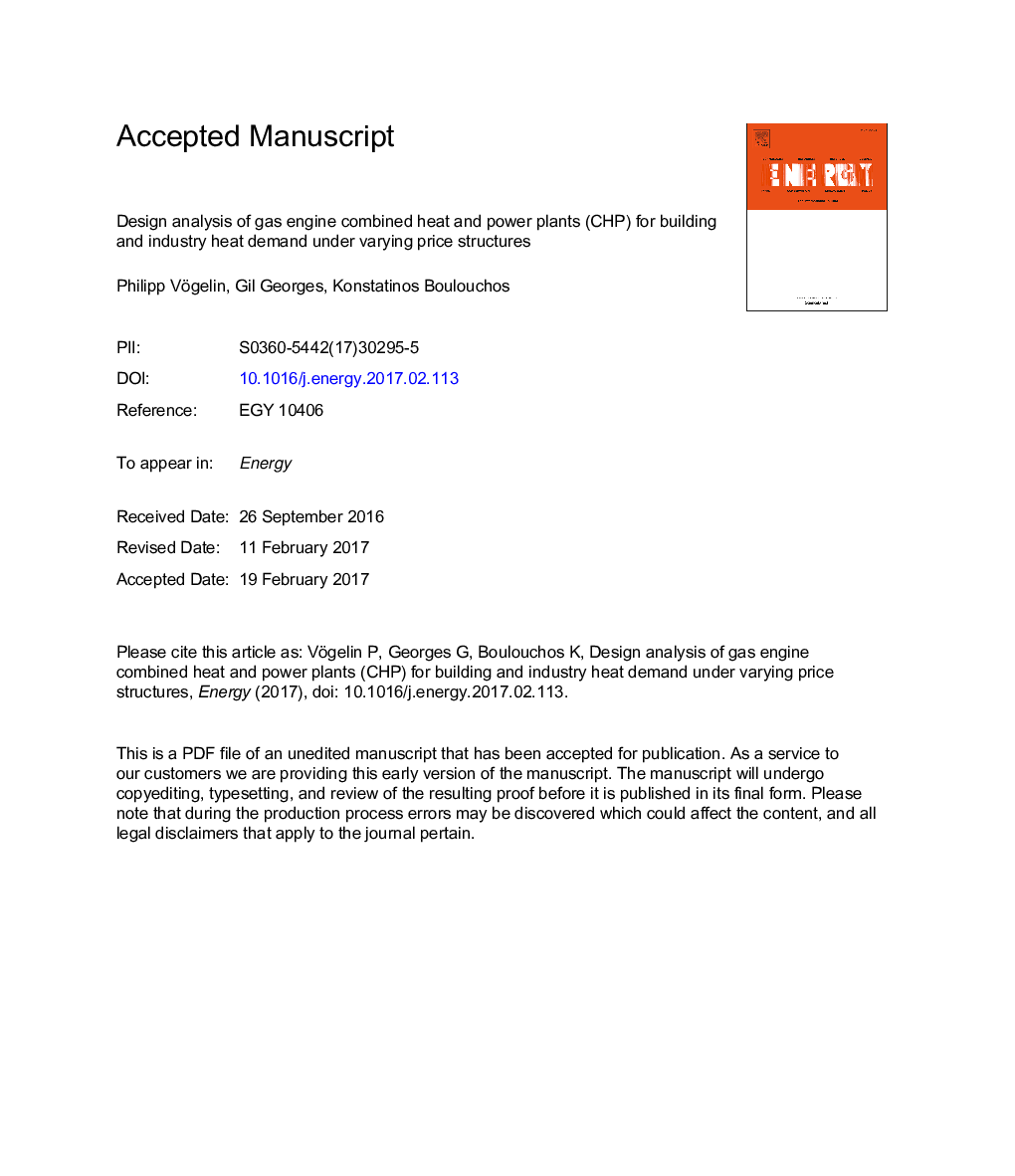| Article ID | Journal | Published Year | Pages | File Type |
|---|---|---|---|---|
| 5476487 | Energy | 2017 | 41 Pages |
Abstract
Combined heat and power (CHP) plants based on gas engines feature overall efficiencies of 90%, response times of less than 2 min, tolerate multiple starts per day and can be deployed as decentralised generators. A decoupling heat storage device between the plant and the heat sink can improve operation flexibility, but increases investment costs. The cost-optimal sizing of plant and storage against time dependent electricity prices is a non-trivial optimisation problem. In this study, we investigate how the optimal design depends on various boundary conditions. We sweep residential and industrial heat demand profiles (5 kW-100 MW peak), electricity price levels and variance and fuel prices. We pair a linear plant model with heat sink and price combinations and use a fast heuristic algorithm to find power, storage size and operating pattern for maximised annual profit over 8760 h. Brake-even is reached with a surplus of 0.03-0.14 â¬/kWh on today's spot market price (fuel 0.08 â¬/kWh). Design results for plants ⥠1 MW power are similar. Future optimal designs are up to 30% larger than today's and profits increase. The design is generally robust on expected price changes due to the flat optimum. The results provide a valuable basis for designing profitable plants today and in future.
Keywords
Related Topics
Physical Sciences and Engineering
Energy
Energy (General)
Authors
Philipp Vögelin, Gil Georges, Konstatinos Boulouchos,
